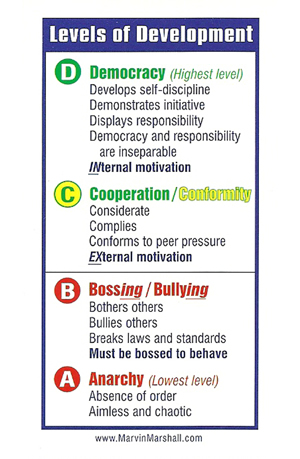Dr. Marshall suggests that it is important to replace rules with procedures and expectations.
Recently I took time to ask about a list of Rights and Responsibilities I noticed hanging on the wall of one alternative high school site that I visit regularly in my position as literacy teacher. I learned that a number of years ago a former teacher had helped the students (aged 14-16) to write it. Ever since, the school has used it as a reference point for discussing success at school. As well, whenever a new student is transitioned into the school, teachers begin with this list of rights and responsibilities to introduce the expectations and procedures of the school to the young person and … >>>
READ MORE >>> →






